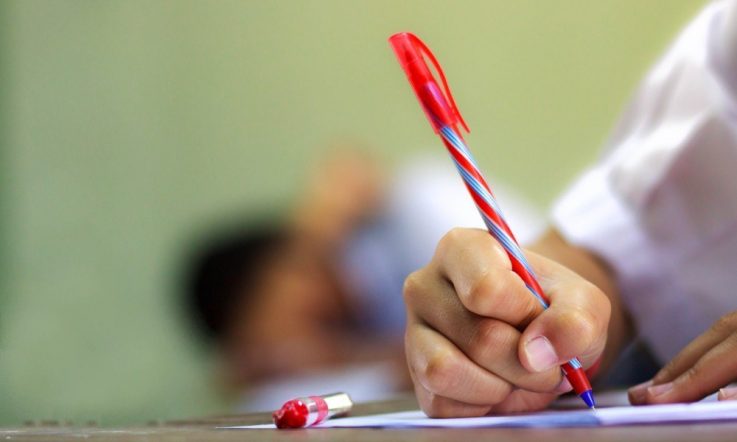South Australian primary school teacher Bec Drozdoff faced a challenge in her writing lessons. She had students with a great capacity to speak and hold conversations using a wide range of vocabulary, but, when it came to writing, they could stare at their blank page for 20 minutes without writing anything at all.
‘How quick we are as teachers to put our students on the spot to write a complete narrative piece and wonder why we are constantly plagued with “I can't think!”,' the Year 3 teacher at Southern Vales Christian College says.
In an effort to tackle this issue and tap into their personal interests, she uses an inquiry-based approach to writing in her classroom. Earlier this year, while working with students on persuasive writing, she invited local town planners into her classroom to talk to students about the specifics of designing a town and considerations they have around sustainability.
From there, students were tasked with writing a persuasive argument about sustainable practices that should be considered in their community. The town planners even came back to the classroom to listen to their arguments.
‘So through that inquiry, we teach the explicit language of persuasive arguments – the structure, the form, how to persuade – and then they get to apply that writing in a real world context,' Drozdoff says.
Her classroom of 28 students caters for a diverse range of personalities, cultural backgrounds and learning needs, including autism spectrum disorder (ASD), attention-deficit/hyperactivity disorder (ADHD) and other social, emotional and academic needs.
Drozdoff says it is important to break down the writing tasks for students into simple steps, rather than having students become overwhelmed by writing an entire piece. She's found that reducing the expectations of set work enables students to produce a higher quality of work. ‘I think, ultimately, writing is a very big task in itself. So, when you say to a student, “go write a narrative” or “go write a persuasive argument”, that big task in itself is very daunting for someone that struggles to process with more than one thing at a time.'
She says a lot of the time it comes down to scaffolding or giving students one-on-one help, but it always depends on what they're focusing on.
‘Do I want this student to focus on just generating great ideas in cohesion, or do I want them focusing on their spelling and grammar and paragraphing? And so it really comes down to picking an outcome for the lesson that you want that student to achieve within writing, and then setting them up for success in that outcome,' Drozdoff explains.
Allowing students to have time for rich and creative brainstorming is another approach that she uses in her lessons.
‘This is vital to any form of writing – whether it's narrative, persuasive or informative. Students need opportunities to activate prior knowledge, to build upon events they are familiar with and gain new perspectives from their peers to enhance their stories.'
Professional learning for improving writing
In early 2018, the school purchased several online resources from Seven Steps to Writing Success and when Drozdoff used them in her classroom, she saw some initial great results. From there, she took part in a Seven Steps to Writing Success Workshop in an effort to learn more about the program.
One activity that resonated with her from the session was a paper fight, during which she was partnered with a colleague and had to have an argument in writing.
‘Each person takes turns in writing a line in response to the other. The things we wrote had me in tears of laughter, and my hand shot up to volunteer to read aloud when the opportunity was given,' Drozdoff says.
On the first day of the 2019 school year, Drozdoff decided to try this activity with her Year 3s, and since that day, they've been hooked.
‘Paper fights are something I do almost daily in my classroom because of the pure enjoyment they get. And then we all stand around and read our paper fights while we eat our fruit or recess. I have never before seen such passion to write in the classroom,' she says.
Drozdoff says that this activity reminded her that writing doesn't need to be a long, arduous tasks. ‘Short bursts of intense and rich learning over consistent periods of time yield the best results. Seven Steps is all about breaking tasks into smaller chunks and repeating them often. Like anything, repetition is key and the biggest change to planning I have made is shortening my lessons and increasing repetition,' she says.
Currently undertaking a Master of Education (Gifted Education) at Flinders University, Drozdoff says that this approach has also helped her to become a better student herself.
‘I think you get very hung up when you're working for grades and you're working for a certain standard and then you get caught up on the secretarial side of writing,' she says. ‘…I guess it's changed how I analyse writing and then I put it into practice myself.'
In what ways do you ensure that rich and creative brainstorming takes place in your writing lessons? What impact does this have on students’ writing?
Bec Drozdoff says it’s about ‘picking an outcome for the lesson … and then setting [students] up for success in that outcome’. Think about a recent lesson you’ve taught. What did you want students to achieve during the lesson? What did you do to help set them up for success?



